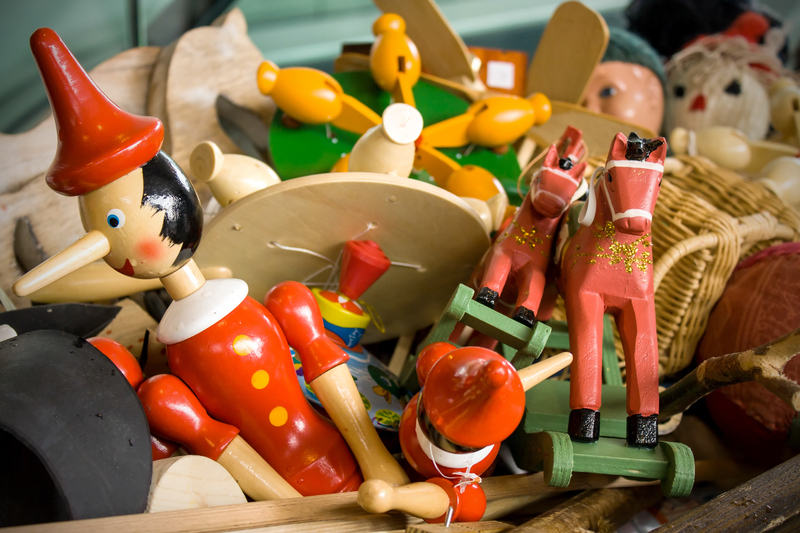Disposing of PPE the Responsible Way to Protect Your Health
Personal Protective Equipment (PPE) has become an integral part of our lives, especially since the outbreak of COVID-19. Masks, gloves, face shields, and other protective gear help reduce the risk of infection and transmission of diseases. However, improper disposal of PPE can defeat its very purpose, posing new risks to both personal health and the environment. In this comprehensive article, we explore how to dispose of PPE the responsible way to safeguard not only your health but also the well-being of your community and the planet.

Why Responsible PPE Disposal Matters
The widespread usage of disposable masks, gloves, and other PPE means millions of items are discarded daily. When not disposed of properly, these items can:
- Increase the risk of pathogen spread
- Threaten environmental and wildlife health
- Clog drainage systems, causing urban flooding
- Endanger waste management workers
- Lead to fines or legal consequences in some areas
Understanding the correct process for disposing of PPE is crucial for maintaining public health standards and protecting our environment. From households to healthcare facilities, responsible PPE disposal should be a top priority.
The Fundamentals of PPE Disposal
To ensure PPE provides its intended protection without causing other hazards, follow these essential steps:
1. Know Your PPE Types
Before disposing of Personal Protective Equipment, identify the type you are using. Common types include:
- Masks: Surgical, N95, cloth masks (reusable and disposable)
- Gloves: Latex, nitrile, vinyl (generally single-use)
- Face shields/goggles: Often reusable, occasionally single-use
- Gowns/coveralls: Medical gowns, aprons (single-use and reusable)
2. Segregate Used PPE
Once used, PPE is considered contaminated and should not be mixed with regular household or office waste. Always segregate used PPE immediately to avoid cross-contamination.
- Designate a separate bin (preferably with a lid) for PPE disposal.
- Use a strong, leak-proof trash bag. Double-bagging is recommended for medical or biohazardous waste.
3. Safe PPE Removal and Handling
Proper removal, known as "doffing," helps prevent the transfer of germs:
- Remove gloves first, turning them inside out without touching the exterior.
- Discard masks and other PPE touching only the straps or edges.
- Wash your hands thoroughly with soap and water, or use an alcohol-based sanitizer, immediately after handling used PPE.
Disposing of PPE at Home: Step-by-Step Guide
1. Mask Disposal
- Disposable Masks: Do not attempt to wash and reuse. Fold the mask inwards to contain droplets, wrap securely in tissue/paper, and place in a dedicated PPE waste bin.
- Reusable Fabric Masks: Wash regularly with detergent and hot water. Do not dispose of with regular trash unless damaged beyond use. Cut before disposal to prevent misuse.
2. Glove Disposal
- Pinch the outside of one glove at the wrist and peel away from the hand, turning the glove inside out.
- Hold the removed glove in the gloved hand and slide an ungloved finger under the wrist of the remaining glove to remove.
- Dispose of both in the PPE bin. Never litter gloves outdoors.
3. Other PPE Items
- Face Shields/Goggles: If single-use, clean with disinfectant and place in PPE waste; if reusable, disinfect thoroughly and store safely.
- Gowns/Aprons: Follow manufacturer's instructions for washing or disposal. For disposable variants, place directly in the PPE waste bin.
4. Final Steps
- Seal the trash bag securely.
- Label the PPE waste if required by local waste authorities.
- Dispose of according to municipal guidelines (some areas have special collection points).
- Disinfect the bin and surrounding area regularly.
The Impact of Improper PPE Disposal
Improperly discarded PPE can be seen scattered in parks, streets, and waterways, resulting in serious environmental repercussions:
- Microplastic Pollution: Most masks and gloves contain plastic fibers that do not fully degrade, breaking down into microplastics that contaminate soil and water.
- Wildlife Hazards: Stray masks and gloves can entangle animals, or be mistaken for food, leading to injury or death.
- Human Health Risks: Used masks and gloves may still carry pathogens, posing health risks to sanitation workers and others who handle waste.
How Healthcare Facilities Dispose of PPE the Responsible Way
Hospitals, clinics, and laboratories follow strident protocols for safe PPE disposal to prevent the spread of infectious diseases. Their methods include:
- Color-Coded Bins: Red or yellow for infectious waste, black for general waste.
- Autoclaving: Steam sterilization before final disposal, rendering infectious agents harmless.
- Incineration: Particularly for large volumes of highly infectious PPE waste.
- Contracted Biohazard Waste Disposal: Licensed companies collect and treat medical PPE waste safely.
*For home and business owners, it is not recommended to incinerate PPE waste independently, as improper burning can release toxic fumes.*
Eco-Friendly PPE Disposal Options
With the massive surge in single-use PPE, there is an urgent need to minimize environmental impact. Here's how individuals and organizations can make responsible disposal of PPE more eco-friendly:
1. Use Reusable PPE Where Possible
- Opt for machine-washable fabric masks and gowns.
- Disinfect and reuse face shields rather than discarding after each use.
2. Look for Biodegradable PPE Products
- Some companies offer compostable or biodegradable masks and gloves made from natural fibers.
- Check for certified compostable labels before purchase.
3. Participate in PPE Recycling Schemes
- Certain specialty recyclers (like TerraCycle) offer PPE recycling programs. These collect, clean, and process used PPE into new products.
- Contact your local authority to check for available programs.
4. Raise Awareness and Educate Others
- Share information on proper PPE disposal with family, friends, and colleagues.
- Advocate for the installation of PPE-specific disposal bins in public areas.
PPE Disposal Laws and Regulations
In response to the pandemic and increased PPE waste, many governments have introduced specific regulations for safe PPE disposal. Know your local rules:
- Some cities fine individuals or businesses for littering masks and gloves.
- Healthcare waste is strictly regulated and must be managed as clinical or infectious waste.
- Public spaces (like malls, airports, and parks) may have designated PPE disposal bins--use them when available.
- Improper disposal in recycling bins can contaminate entire loads, so always check with your local waste authority before attempting to recycle PPE.
Protecting Waste Handlers and Community Safety
By disposing of PPE correctly, you're not just protecting your health but also safeguarding the health of sanitation workers and the wider community. Here's how you help:
- Reduce Pathogen Transmission: Sealed and segregated PPE waste minimizes exposure risk for those who collect and sort trash.
- Promote Efficient Waste Management: Clear PPE disposal reduces the burden on recycling facilities and prevents contamination.
- Encourage Responsible Behavior: Setting a positive example encourages others to follow suit, building a cleaner and safer community.
What to Avoid: Common PPE Disposal Mistakes
- Do not flush masks or gloves down the toilet; they cause blockages and pollute waterways.
- Do not throw used PPE in recycling bins (unless specified by recycling guidelines).
- Do not leave discarded PPE in public places or natural environments.
- Do not try to burn PPE at home; it can produce harmful gases.

Frequently Asked Questions about Responsible PPE Disposal
Can I recycle my used PPE?
Most municipal recycling programs do not accept used masks and gloves, as they pose a contamination risk. Some specialty companies offer PPE recycling, but always check local guidelines before attempting to recycle.
Is it safe to reuse disposable PPE?
Single-use masks and gloves are designed for one-time use. Reusing them can compromise your safety by reducing effectiveness and increasing the risk of infection.
What should I do if I see PPE litter in public?
If safe to do so, use gloves and a litter picker to collect discarded PPE, place it in a sealed bag, and dispose of it in the appropriate bin. Wash your hands afterward.
Are there alternatives to disposable PPE?
Yes. Many reusable options are effective when cleaned properly. Choose fabric masks and reusable face shields to lessen environmental impact.
Conclusion: Commit to Responsible PPE Disposal
The fight against infectious diseases depends on both protective measures and responsible habits. Wearing PPE is just one part of the equation--safe and responsible PPE disposal is equally critical for protecting your health and that of others. By taking the time to segregate, handle, and dispose of PPE correctly, you contribute to a healthier community and a cleaner environment. Remember, small actions like properly discarding a mask or glove can make a significant difference in public health and ecological balance.
Commit today to responsible PPE disposal--for your safety, your community's well-being, and the future of our planet.
